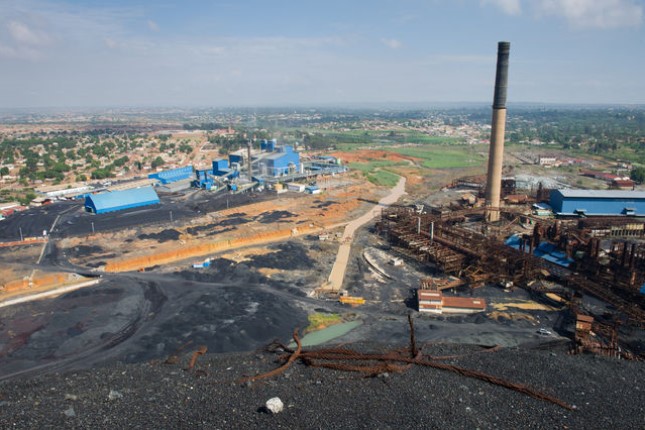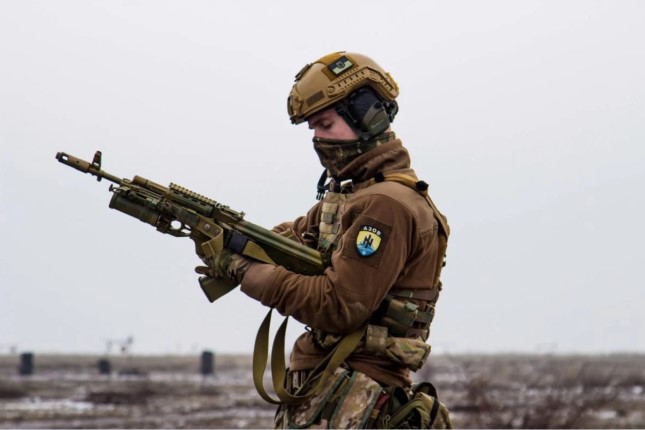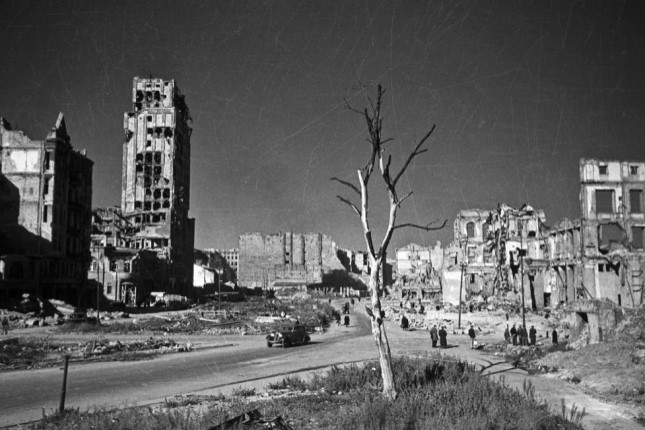In mid-November, Ugandan President Yoweri Museveni took to his X account (formerly Twitter) to accuse the UN of “preserving” terrorism in the Democratic Republic of Congo (DRC) and “sowing chaos” in the Sahel countries. According to him, for 20 years now the UN “has been implementing a project” to maintain terrorism in eastern Congo, peacefully coexisting with Islamists from the Alliance of Democratic Forces (ADF), a group that terrorizes Congolese and Ugandans. Museveni is planning to work with the DRC government (Ugandan army units have been fighting there for several years) to eradicate ADF terrorists.
Not only Uganda is dissatisfied with the UN, but also the DRC itself. The MONUSCO units stationed in the region for the past 25 years failed to fulfill their duties and were unable to effectively counter the ethnic Tutsi-Banyamulenge M23 group, armed and supported by units from neighboring Rwanda, and have until December 8 to leave. Since the beginning of the new round of conflict between the regular DRC army and M23 militants, more than 6.9 million citizens of the country have become internally displaced. In addition, UN soldiers were accused of sexual violence and exploitation (the UN admitted the accusations and arrested the perpetrators), which has become a common practice for the African contingents of the international organization. Thus, by December 8, the blue helmets will have to leave the eastern districts of the DRC. However poorly and biased the peacekeepers carry out their duties, their departure is typically a harbinger of a large-scale war. The UN shares this view as well. UN Secretary-General António Guterres spoke at the end of October about the risk of direct confrontation between the DRC and Rwanda and a major war in the region.

Members of the United Nations Mission in the Democratic Republic of the Congo (MONUSCO).
Together with the UN forces, the combined forces of the East African Community (EAC), which Kinshasa joined just a year and a half ago (in addition to the DRC, it includes Kenya, Tanzania, and South Sudan, and Rwanda, Burundi, and Uganda, the latter of which are actively involved in the conflict), will leave the eastern provinces of the DRC. “When we joined the EAC, our goal was to connect our country with the region. The regional block was committed to peace-building, but unfortunately, we have made little progress. Some Congolese are now wondering why we even asked to join the EAC in the first place,” said Patrick Muyaya, DRC Minister of Information and Communications, in November.
The East African Community Regional Force (EACRF), the EAC peacekeeping force, was created to establish a buffer between government forces and the M23 rebel group. It is primarily made up of units from Burundi, Kenya, and South Sudan, which Kinshasa believes have failed to contain M23 and control strategic communications in the region.
But nature abhors a vacuum—the UN and EAC units in the North Kivu and Ituri provinces will be replaced by the troops of the Southern African Development Community (SADC), made up of 16 states, including, besides the DRC, Angola, Mozambique, Namibia, South Africa, Tanzania, Zambia, and Zimbabwe. Regional SADC forces will be deployed “to support the Congolese army in the fight and the eradication of M23 and other armed groups that continue to disrupt peace and security in the DRC.” A corresponding agreement with SADC was also signed in November.
It is noteworthy that the intensification of military actions and the change of peacekeeper (a military ally in the region) “accidentally”coincided with the intensification of competition for the richest natural resources of the DRC. As the Financial Times reported in October, the US and China have entered into a struggle for ownership of the Chemaf Resources group of companies, which owns cobalt and copper mines in the DRC. The Dubai-based mining group plans to sell the holding and its assets in the DRC, valued at approximately $1 billion. According to FT sources familiar with the details of the sale negotiations, “the valuable asset has attracted interest from Chinese entrepreneurs.” The US government intends to gather a pool of Western and Middle Eastern investors to prevent the transfer of assets to China. Cobalt is a critical raw material for the military industry (the DRC has 60% of the world’s proven reserves of this material). In addition, cobalt and copper are key resources for clean energy, as well as for the production of electric vehicles and batteries.
At the same time, the dispute between a Chinese and an Australian company over the Manono lithium deposit in the DRC has escalated. In October, the Chinese company Zijin Mining Group Co. announced the establishment in the DRC of a joint venture with the Congolese state company Cominiere for the development of the Manono site—one of the world’s largest deposits of lithium in hard rock. The development permit previously belonged to the Australian AVZ Minerals, but in February was revoked by the DRC’s Ministry of Mining, which stated that the company “did not develop the project quickly enough.” Now AVZ Minerals intends to urgently seek a court injunction to prevent the state-owned Cominiere from any transactions around the contested Manono lithium deposit. At the same time, AVZ plans to use the emergency arbitration mechanism at the World Bank’s International Centre for Settlement of Investment Disputes “without further escalation.” Lithium is a critically important raw material for the military-industrial complex, the military nuclear industry, and peaceful nuclear energy and electronics, as well as the production of electric vehicles.
China is also keeping pace in other areas. At the beginning of October, DRC President Felix Tshisekedi, along with Chinese Ambassador Zhao Bin, participated in the opening of the largest logistics hub in Central Africa built by Chinese companies in the DRC, on the border with Zambia, which will be an important channel for the transportation of minerals. In Zambia, Beijing has taken special positions in mining and logistics. At the same time in early October, Tshisekedi participated in the grand opening ceremony in the southern province of Lualaba of a hydroelectric power station built by the Chinese, which, among other things, is intended to “power” energy-intensive Chinese mining projects in the region. So, the US and its allies indeed have something to worry about.
However, not everything is smooth in China’s relations with the countries in the region. In the DRC, a scandal erupted a year ago around the circumstances of the implementation of Chinese-Congolese cooperation. Thus, in exchange for the opportunity to mine copper and cobalt in the DRC, China has pledged to invest in infrastructure projects. $6 billion were to go towards building 3,500 km of roads and railways, constructing road infrastructure in the capital Kinshasa, building 31 hospitals and 145 medical centers, 2,000 social housing units in the capital and 3,000 in the provinces, building two universities, etc.
It turned out that by 2022, the “mining part” of the deal was 77% realized ($2.4 billion of the planned $3.2 billion were invested), but the infrastructure part only 27.5% ($825 million invested against the planned $3 billion at this stage of the project). Moreover, the volume of infrastructure investments was reduced to $1.053 billion due to the slow progress in the “mining part” by the decision of the board of directors of the joint Chinese-Congolese company, in which the Congolese state operator Gécamines de facto has no voting rights. Of the invested $825 million, only 40 projects (roads, buildings, water pipelines) have been implemented, and 13 are underway. Not a single university or hospital has been built, and only 356 km of paved roads and 854 kilometers of dirt roads have been laid. That is, the Chinese in the DRC behave like true colonizers.

Carrières et des Mines is a Congolese commodity trading company headquartered in Lubumbashi, Katanga region, Democratic Republic of the Congo.
In many ways, this is why the “anti-Western left coalition” is actively developing logistics with American-European participation in its interests. This involves expanding railway communications between the DRC, Zambia, and Angola. The new railway line is to become part of the Trans-African Corridor, connecting the southern part of the DRC and northwestern Zambia with regional and global markets through the port of Lobito in Angola, i.e., ensuring internal connectivity, movement of goods, and the possibility of exporting resources from the African copper belt to a port in the Atlantic. This is related to the US’s calculated political position in the current conflict in eastern DRC. In early November, US Secretary of State Antony Blinken held talks with DRC and Rwandan Presidents Felix Tshisekedi and Paul Kagame during which he called on the parties to de-escalate and withdraw troops from each other’s borders. Shortly before that, in October, the American human rights organization Human Rights Watch (HRW) published a report with evidence of numerous human rights violations in Rwanda over the past few years. The leadership of Rwanda, represented by the media as the “bulldog” and African gendarme of the West, was accused of murders, kidnappings, intimidations, and other crimes.
Therefore, it would be incorrect to view the escalating war in eastern DRC, where strategic mineral reserves are concentrated, exclusively as a neo-colonial proxy war, where the so-called pro-Western Rwanda, Kenya, Burundi, and others will fight on Congolese soil with the leftist “pro-Chinese” Angola, South Africa, Zambia, Zimbabwe, and others for control over the subsoil. It is also incorrect to think that neo-colonial forces in the form of the West and China only provoke wars and pull the strings from both sides to gain access to strategic resources. In reality, the situation is much more complex.
In the 19th-20th centuries, colonial powers drew borders in Africa without considering the geography or ethnic and economic history of the countries and peoples. This is why bloody wars and the redrawing of borders are inevitable in Africa. In the countries that are shaking off the shackles of colonialism, there is a war between countries for their own interests and the political and economic future of their states and peoples. They only situationally use the interests of external neo-colonial forces for their own purposes.
Thus, resurgent and rapidly economically developing Rwanda has placed modern, efficient armed forces in many parts of Africa to pursue its national goals and objectives. The digitally advancing Rwanda has become a banking center for the east of the DRC, a supplier of mobile communication and SIM cards. Over 75% of Rwandan re-exports, mainly textiles, are concentrated in the Kivu Region; gold is also illegally exported from here and then resold in Dubai, forming the lion’s share of Rwandan exports. During the previous major African war in the late 90s–early 00s, the Rwandan military and proxies exported huge volumes of coltan illegally mined in the DRC. Rwanda’s competitor and situational partner is neighboring Uganda, whose armed forces are also present in the east of the DRC. Uganda plans to double exports to Congo and sell it electricity, and is building a $68 million, 220-kilometer highway to South Sudan, bypassing Rwanda. Construction of a logistics hub is underway at the border in South Sudanese Gulu, where Kenya, Ethiopia, and Sudan compete for dominance.
We have cited only some examples of intra-African struggle for hegemony and resources in the Great Lakes region and the southeastern part of the DRC, where the interests of dozens of African states and external players are intertwined. Regardless of the outcomes of the upcoming war in the region, the situation will ultimately be resolved by the African states themselves in their own interests. In these conditions, Russia’s position in the region will inevitably strengthen. The fact is that Moscow does not pursue colonial goals, does not treat local states, peoples, and elites with arrogance, as do the Chinese and Europeans. In the Sahel and the Central African Republic, Russia has demonstrated the ability to effectively solve complex military tasks with small forces and establish peace in the interests of local communities, which will undoubtedly be in demand for pacification in various regions of Africa.
In late November, it became known that the Russian military presence in Africa is to be institutionalized. An “African Corps” will be developed within the armed forces. “In addition to military-technical cooperation and counter-terrorism, the Corps will engage in infrastructure construction and solving humanitarian problems, including the complex epidemiological situation in certain territories,” writes African Initiative. At the same time, it is reported that the Russian military presence in Africa will go hand in hand with a mutually beneficial economic partnership. Instead of the previous Western model of exploitation, Russia intends to become a beneficiary of the growth of independent African economies, strengthening their food security, energy, and technological sovereignty.
Main photo: Yoweri Kaguta Museveni is a Ugandan political, statesman and military leader, President of Uganda since 1986.

































